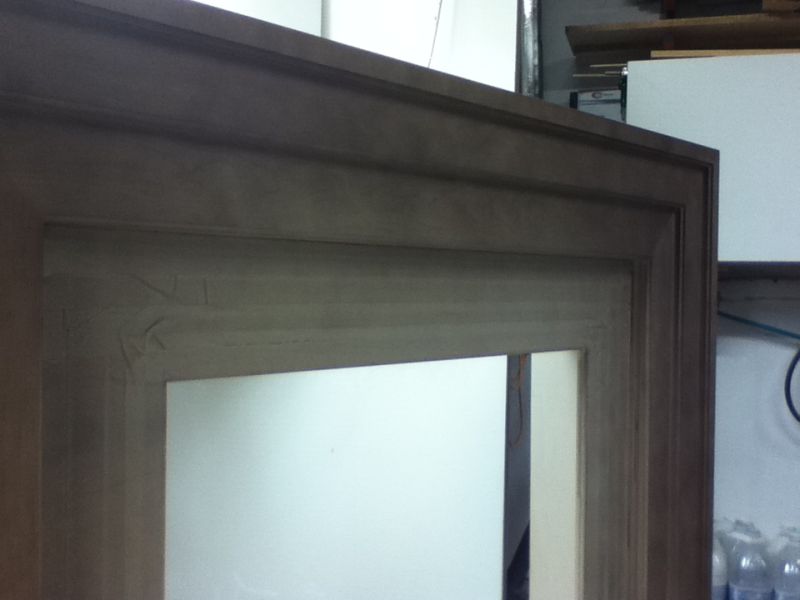Question
We are trying to track down possible sources for a gray pore appearance in some refinishing projects. After staining and applying a sealer coat, the deeper pores of the wood have a semi-opaque dull gray look that does not deepen or brighten with greater wetting. We're bouncing between several possible causes: insufficient stripping of the old filler, residual skinning agent from the stripper, PH reaction from stripper and acid dye. We use a flow over stripping table with a mildly PH activated MC stripper. We rinse with air powered water mist, scrubby the surface with a sodium sesquicarbonate (cousin to TSP) solution and rinse again. Dry for 2 to 3 days in the heated cure area. Surface prep with 180 grit paper hand and/or power, brush and air blow sanding dust. The background stain is water aniline from Lockwood, sometimes polymerized with a WB lacquer (25% of the total solution) to prevent the stain from lifting into the SealCoat sealer. We have had trouble keeping heat (above 55 degrees) in the stripping area, which has us leaning toward the insufficient stripping cause, in that the MC is far less aggressive.
Forum Responses
(Finishing Forum)
From contributor C:
Before you do anything else, wire brush (brass) a small area with lacquer thinner and let dry, sand and spray with clear, and get back as to whether the problem persists or not.
